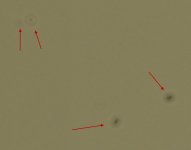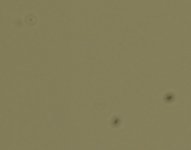I've had a D800 for just over a year now and I've been having difficulty with a dirty sensor almost the entire time. I'll summarize the interactions with Nikon below. More detail is available upon request. I am looking to see if anyone with deep experience with Nikon and the D800 has suggestions about how to proceed.
The sensor accumulates a combination of regular dust and oily spots originating from within the camera. I and several professionals who have looked at the images believe that round spots that resemble a donut with a dark center, a lighter splatter area, and an outer dark ring some of which splatter into an arc when blown are oily droplets rather than simple dust. Naturally the smaller the aperture the more they are visible. They get very noticeable at about f10. Since I shoot a lot of landscape, micro, and some very long exposures (e.g. waterfalls) I have need for small apertures.
The camera is at more than 23,000 shutter activations.
Here are three images in reduced size with links following to higher-resolution versions. The original JPGs at the links are full FX sensor size 4912x7360. The JPG images are from after the fourth repair. When the camera came back from repair 4 the sensor was clean. It took one image for an oily spot to show up. Upon receiving the camera the image with 1125 was taken. I then did a series of six 15-minute time lapses that involved another 5400 shutter activations. The images 1138 (f32) and 1139 (f22) were taken immediately after the time lapses. So, all the accumulations occurred while the camera was on a tripod with no lens changes and no changes in focus.
Initial image taken after Nikon's fourth "repair" cleaning (at F22):
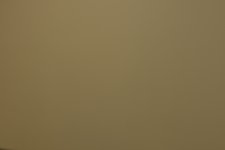
After six 15-minute time lapses totally 5400 exposures:
F22 version:
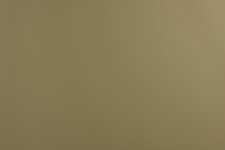
F32 version:
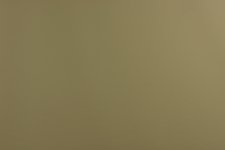
Links to full-size versions of above images:
http://www.mdbgroup.com/Nikon/Nikon-D800-1125-initial-image-after-repair-4-F22.JPG
http://www.mdbgroup.com/Nikon/Nikon-D800-1139-After-Repair-4,-5400-Exposures,-F22.JPG
http://www.mdbgroup.com/Nikon/Nikon-D800-1138-After-Repair-4,-5400-Exposures,-F32.JPG
Earlier in time, before the fourth repair I did a 90-minute time lapse to look at dirt accumulation during a single time lapse. The D800 with a freshly-cleaned 105mm AF-S micro lens set to F22 with a fixed white balance (sunlight). Manual focus, set to infinity. The camera was tripod mounted. A beige wall was lit with two 300 watt CFL studio lights. With the camera at F22 on aperture priority the camera selected a shutter speed of about 0.6 seconds. A time lapse was done with one image per second for 1.5 hours at JPG Large Fine. This produced 5,400 images that the D800 combined into a 180-second MOV video.
The video is available in two dimensions. The smaller is 11MB but more difficult to see. The larger is 30MB and may take quite a while to download for viewing. SAFETY PRECAUTION FOR THE VIDEOS - please note there is flicker from the CFL lights. If you are sensitive to flicker please do not watch the video - just look at the JPGs.
www.mdbgroup.com/Nikon/Nikon-D800-90-minute-time-lapse-105mm-before-repair-4-AFS-F22-854x480.mov
www.mdbgroup.com/Nikon/Nikon-D800-90-minute-time-lapse-105mm-before-repair-4-AFS-F22-1280x720.mov
The camera has been in to Nikon for repair four times. I have also written to the President of Nikon USA who just referred me to a senior customer service rep. They will not acknowledge that any of the dirt is oily nor that the shutter mechanism may be the source. They insist all the accumulation is environmental dust. They say all they can do is continue to clean the camera.
Ideally this would be fixed so that the oily accumulations stop occurring. Absent that I've started building quite a set of equipment to clean the sensor on my own...
I am looking for your recommendations how I should proceed and whether there is a way to resolve this problem.
The sensor accumulates a combination of regular dust and oily spots originating from within the camera. I and several professionals who have looked at the images believe that round spots that resemble a donut with a dark center, a lighter splatter area, and an outer dark ring some of which splatter into an arc when blown are oily droplets rather than simple dust. Naturally the smaller the aperture the more they are visible. They get very noticeable at about f10. Since I shoot a lot of landscape, micro, and some very long exposures (e.g. waterfalls) I have need for small apertures.
The camera is at more than 23,000 shutter activations.
Here are three images in reduced size with links following to higher-resolution versions. The original JPGs at the links are full FX sensor size 4912x7360. The JPG images are from after the fourth repair. When the camera came back from repair 4 the sensor was clean. It took one image for an oily spot to show up. Upon receiving the camera the image with 1125 was taken. I then did a series of six 15-minute time lapses that involved another 5400 shutter activations. The images 1138 (f32) and 1139 (f22) were taken immediately after the time lapses. So, all the accumulations occurred while the camera was on a tripod with no lens changes and no changes in focus.
Initial image taken after Nikon's fourth "repair" cleaning (at F22):

After six 15-minute time lapses totally 5400 exposures:
F22 version:

F32 version:

Links to full-size versions of above images:
http://www.mdbgroup.com/Nikon/Nikon-D800-1125-initial-image-after-repair-4-F22.JPG
http://www.mdbgroup.com/Nikon/Nikon-D800-1139-After-Repair-4,-5400-Exposures,-F22.JPG
http://www.mdbgroup.com/Nikon/Nikon-D800-1138-After-Repair-4,-5400-Exposures,-F32.JPG
Earlier in time, before the fourth repair I did a 90-minute time lapse to look at dirt accumulation during a single time lapse. The D800 with a freshly-cleaned 105mm AF-S micro lens set to F22 with a fixed white balance (sunlight). Manual focus, set to infinity. The camera was tripod mounted. A beige wall was lit with two 300 watt CFL studio lights. With the camera at F22 on aperture priority the camera selected a shutter speed of about 0.6 seconds. A time lapse was done with one image per second for 1.5 hours at JPG Large Fine. This produced 5,400 images that the D800 combined into a 180-second MOV video.
The video is available in two dimensions. The smaller is 11MB but more difficult to see. The larger is 30MB and may take quite a while to download for viewing. SAFETY PRECAUTION FOR THE VIDEOS - please note there is flicker from the CFL lights. If you are sensitive to flicker please do not watch the video - just look at the JPGs.
www.mdbgroup.com/Nikon/Nikon-D800-90-minute-time-lapse-105mm-before-repair-4-AFS-F22-854x480.mov
www.mdbgroup.com/Nikon/Nikon-D800-90-minute-time-lapse-105mm-before-repair-4-AFS-F22-1280x720.mov
The camera has been in to Nikon for repair four times. I have also written to the President of Nikon USA who just referred me to a senior customer service rep. They will not acknowledge that any of the dirt is oily nor that the shutter mechanism may be the source. They insist all the accumulation is environmental dust. They say all they can do is continue to clean the camera.
Ideally this would be fixed so that the oily accumulations stop occurring. Absent that I've started building quite a set of equipment to clean the sensor on my own...
I am looking for your recommendations how I should proceed and whether there is a way to resolve this problem.

